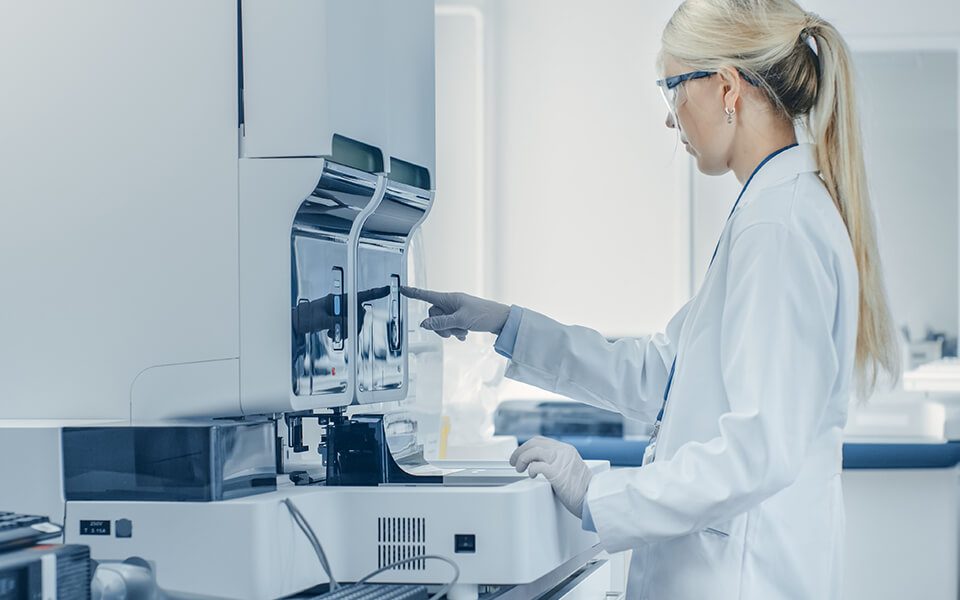It’s 2025, and cell and gene therapies are revolutionizing medicine, offering hope for previously untreatable diseases. Yet, a significant challenge persists behind the scenes: the heavy reliance on manual processes in manufacturing. Even with advancements in automation, manual labor remains a top concern in the cell and gene therapy (CGT) industry, impacting the efficiency and cost of these life-saving treatments and taking a toll on the dedicated professionals working in CGT labs.
The Manual Maze: A Closer Look at the Challenges
- Complexity and Inefficiency: Manufacturing cell and gene therapies is like navigating a complex maze with countless twists and turns. Each step, from cell isolation and culture expansion to genetic modification and purification, involves intricate manual procedures. These processes are often time-consuming, resource-intensive, and prone to human error.
- Personalized Production Bottlenecks: Many cell and gene therapies are personalized, meaning they are tailor-made for individual patients. This individualized approach creates significant manufacturing challenges. Each patient’s cells require unique handling and processing, which can lead to bottlenecks, delays, and increased workload for lab personnel.
- Information Silos and Communication Barriers: Manual processes often rely on paper-based records and disparate systems for tracking patient cells, reagents, and manufacturing steps. This can lead to information silos and communication barriers between different teams and departments. Crucial information might get lost in translation, increasing the risk of errors and jeopardizing product quality.
- Vulnerability to Disruption: Relying on manual, paper-based processes creates vulnerability to unforeseen events. A natural disaster, power outage, or even simple human error can disrupt workflows, damage vital records, and lead to significant production delays. These delays can seriously affect patients awaiting time-sensitive treatments, potentially jeopardizing their health and well-being.
The Impact on the Front Lines
These challenges translate into real-world consequences for the skilled technicians working in cell and gene therapy labs:
- Increased Risk of Error and Contamination: The intricate nature of manual processes, combined with the pressure to meet deadlines, increases the risk of human error. A single mistake, such as mislabeling a sample or incorrectly calculating a reagent concentration, can compromise an entire batch of therapy, potentially delaying treatment for patients and wasting valuable resources. Furthermore, manual handling increases the risk of contamination, which can have devastating consequences for product quality and patient safety.
- Mental Fatigue and Burnout: The constant need for precision, the pressure to avoid contamination, and the responsibility for patient safety can contribute to mental fatigue, stress, and burnout.
- Work-Life Imbalance: The demanding nature of manual processes often requires long hours, weekend work, and on-call shifts, making it difficult to maintain a healthy work-life balance.
- Stress and Anxiety from Potential Disruptions: The ever-present threat of disruptions and delays weighs heavily on lab technicians. Knowing that a single mishap could derail weeks of work and jeopardize a patient’s treatment creates significant stress and anxiety. This constant pressure can take a toll on their mental well-being and job satisfaction.
The Path Forward: Embracing Automation and Empowering Workers
To alleviate these challenges and improve working conditions, the industry must prioritize solutions that address the limitations of manual processes. Imagine CGT labs with:
- Automated Workflows: Sophisticated software orchestrates and streamlines the entire manufacturing process, guiding technicians through each step, minimizing manual data entry, and reducing the risk of human error.
- Real-Time Tracking and Traceability: Every cell, every reagent, every step in the process is meticulously tracked in real-time, providing complete transparency and chain-of-custody documentation with minimal manual effort.
- Seamless Data Management: Integrated systems break down information silos, enabling seamless communication and collaboration between teams, ensuring that critical information is readily available to everyone who needs it.
- Enhanced Regulatory Compliance: Built-in quality control checks and automated documentation ensure adherence to stringent regulatory requirements, reducing the burden of manual compliance efforts.
- Data Security and Disaster Recovery: Cloud-based digital solutions safeguard critical data from potential disruptions, ensuring business continuity and preventing costly setbacks in the event of unforeseen circumstances.
By embracing such solutions, the CGT industry can:
- Improve Efficiency and Productivity: Streamlined workflows and reduced manual labor translate to faster turnaround times and increased production capacity.
- Enhance Product Quality and Safety: Automated processes and real-time tracking minimize errors and ensure consistent product quality, ultimately improving patient safety.
- Reduce Costs: Increased efficiency and reduced errors lead to lower manufacturing costs, making these life-saving therapies more accessible to patients.
- Empower Workers: By automating tedious tasks and providing user-friendly tools, we can free up skilled technicians to focus on more complex and rewarding aspects of their work, improving job satisfaction and reducing burnout.
By embracing automation and prioritizing worker well-being, we can unlock the full potential of cell and gene therapies while ensuring a sustainable and fulfilling future for those who make these life-saving treatments a reality.






